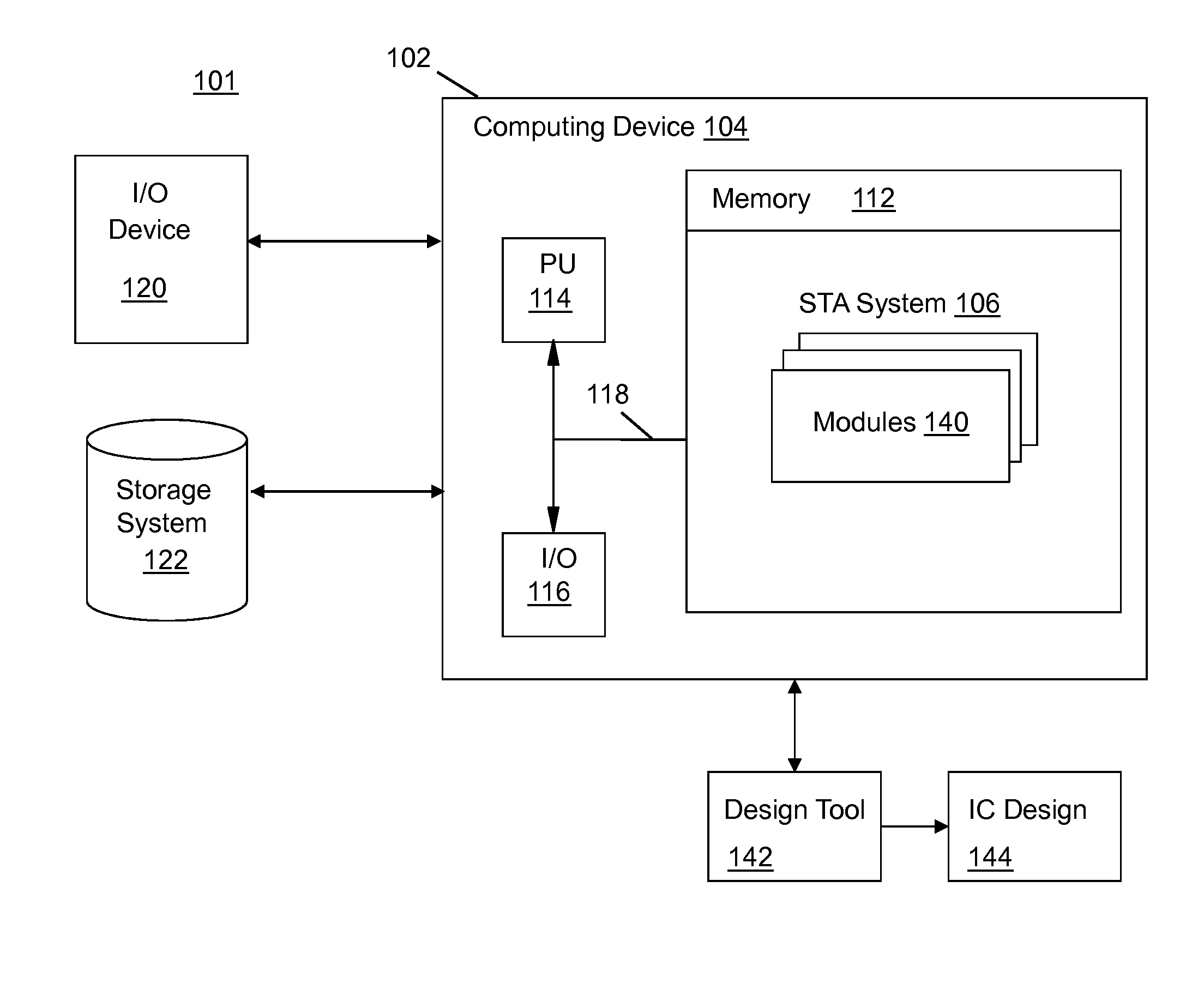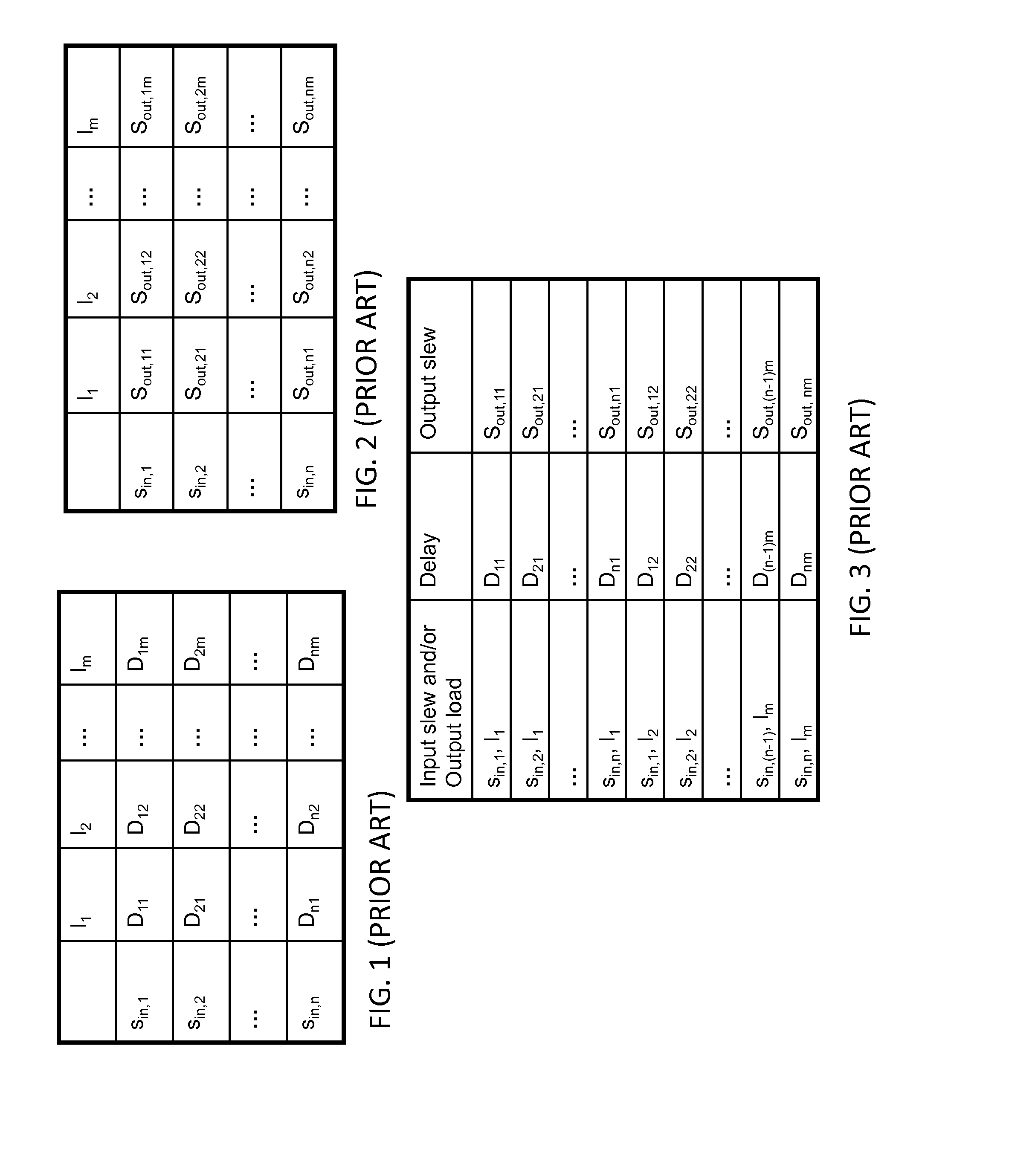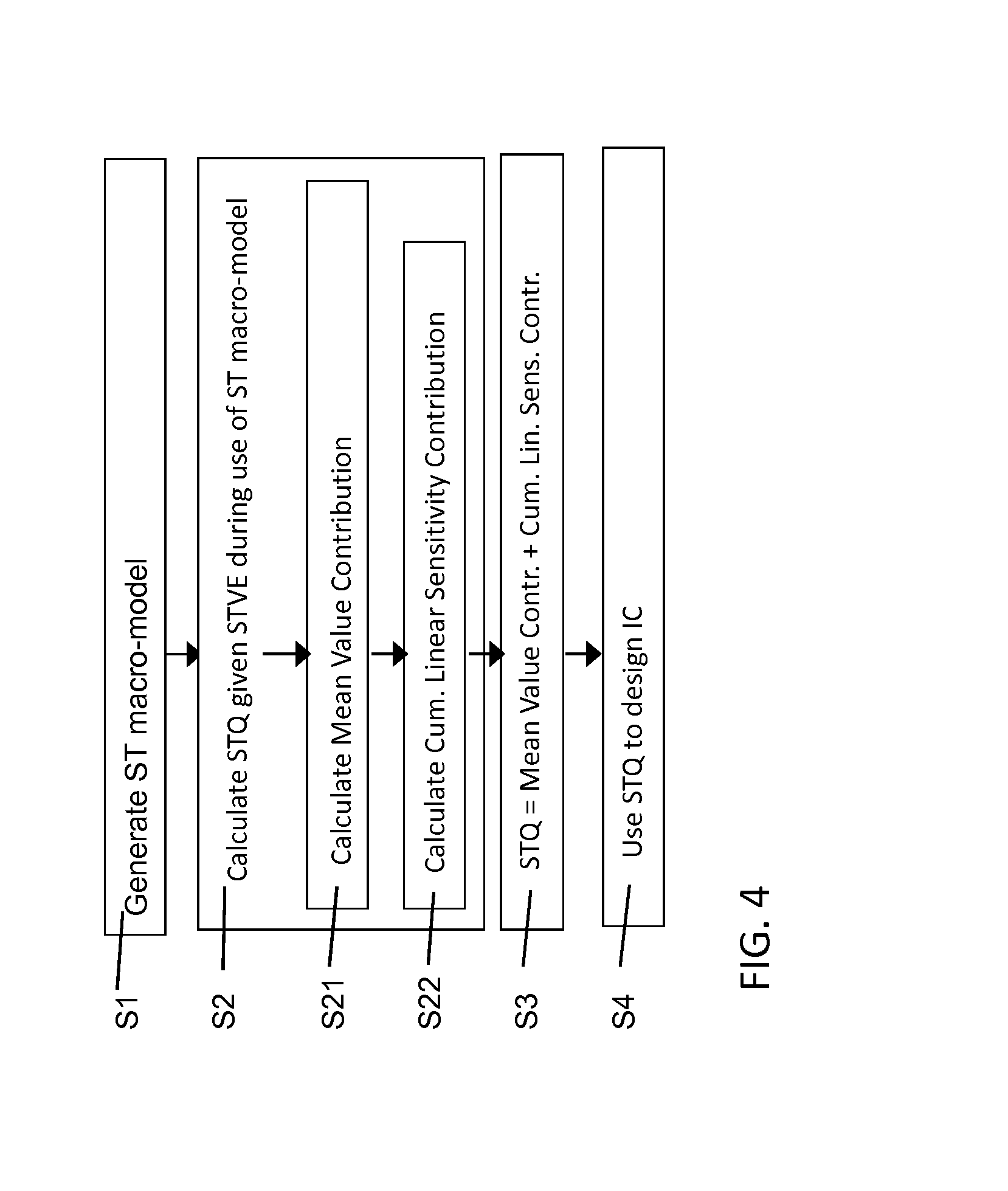Statistical timing using macro-model considering statistical timing value entry
a statistical macro-model and value entry technology, applied in the field of statistical macro-modeling considering statistical timing value entry, can solve the problems of introducing a new dimension of complexity in statistical macro-modeling, overly optimistic and misleading optimization tools, and variability dependen
- Summary
- Abstract
- Description
- Claims
- Application Information
AI Technical Summary
Benefits of technology
Problems solved by technology
Method used
Image
Examples
Embodiment Construction
[0030]Embodiments of the disclosure teach a method, system and program product to create a statistical timing model that is statistical timing value entry aware, and also teaches how to use the model in the presence of statistical timing value variability. As described herein, “statistical timing value entry” may include any parameter that impacts timing of the integrated circuit design such as but not limited to input slew, output load, test guard-times, adjusts, asserts, etc. For purposes of ease of description, the disclosure will refer mainly to use of input slew (Sin) and / or output load (L) as the statistical timing value entries. Embodiments of the disclosure also teach to capture the nominal value of all timing information as lookup tables, as well as the sensitivities of all timing quantities as lookup tables characterized as functions of deterministic timing value entries, e.g., slew and load. It further teaches a method to use these lookup tables in an efficient fashion du...
PUM
 Login to View More
Login to View More Abstract
Description
Claims
Application Information
 Login to View More
Login to View More - R&D
- Intellectual Property
- Life Sciences
- Materials
- Tech Scout
- Unparalleled Data Quality
- Higher Quality Content
- 60% Fewer Hallucinations
Browse by: Latest US Patents, China's latest patents, Technical Efficacy Thesaurus, Application Domain, Technology Topic, Popular Technical Reports.
© 2025 PatSnap. All rights reserved.Legal|Privacy policy|Modern Slavery Act Transparency Statement|Sitemap|About US| Contact US: help@patsnap.com



